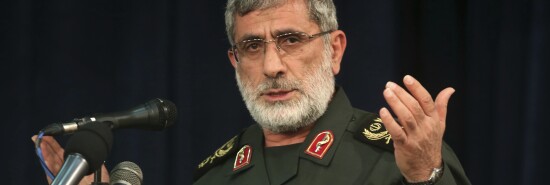
Iran’s hand shown by suspended militia attacks on US forces
Tom Rogan
Video Embed
As Israel continues exchanging prisoners with Hamas for hostages, Iranian-aligned militias in Iraq and Syria continue, thus far, to suspend attacks on U.S. forces.
Between Oct. 17 and Nov. 23, various Iranian-aligned groups carried out at least 66 attacks on U.S. forces in Iraq and Syria. These attacks wounded several U.S. personnel while forcing many others to take shelter inside uncomfortable bunkers repeatedly. American deaths have only narrowly been avoided. The United States faces a difficult task in balancing its deterrence of future attacks alongside sparking a broader conflagration with Iran. Before the suspension of hostilities, the relentless nature of Iranian strikes showed the balance had clearly not been found. U.S. retaliatory actions were too few and timid to impose a new cost-benefit calculus on Tehran.
MILITARY PILOTS GETTING UPDATED EYEWEAR TO PROTECT AGAINST INCREASING LASER THREATS
Still, the suspension of attacks underlines Iran’s operational control over these militias. Recognizing this reality matters because too many like to dance to Iran’s tune when it comes to these militia attacks. Namely, Iran’s claim that while its allies might be carrying out attacks, those allies are doing so under their own authority and in pursuit of their own agendas.
Iran uses this strategy as a semi-deniable means of targeting U.S. interests while avoiding U.S. retaliation. It banks on the Pentagon and U.S. intelligence agencies being unable to tie every attack to its own operatives. Iran banks on U.S. political leadership using the absence of absolute proof of its responsibility to avoid holding Iran responsible.
CLICK HERE TO READ MORE FROM THE WASHINGTON EXAMINER
Not every Shiite-rooted anti-U.S. militia in Iraq and Syria operates under Iranian control. But many do. It is striking, after all, that relentless attacks have now given way to a silence of the guns. This shift from multifront combat to a multifront ceasefire shows just how significant the influence of Iran’s Islamic Revolutionary Guard Corps is on the militias involved here. This situation shows that the militias don’t simply rely on Iran for funding, training, and armaments but for direction. They are being told what to do by Iran and are doing what they are told.
The Biden administration should bear close heed to this truth when the militias recommence their fire. If Americans are killed once fighting resumes, Iran must face direct retaliatory consequences. Few want an escalation of this conflict, but allowing Iran to use its proxies with impunity enables unacceptable harm to U.S. interests and undermines America’s broader deterrence posture. Moreover, tolerating American casualties will only make broader conflict more likely. Iran has shown it is responsible for the militia attacks and must be held culpable as such.
